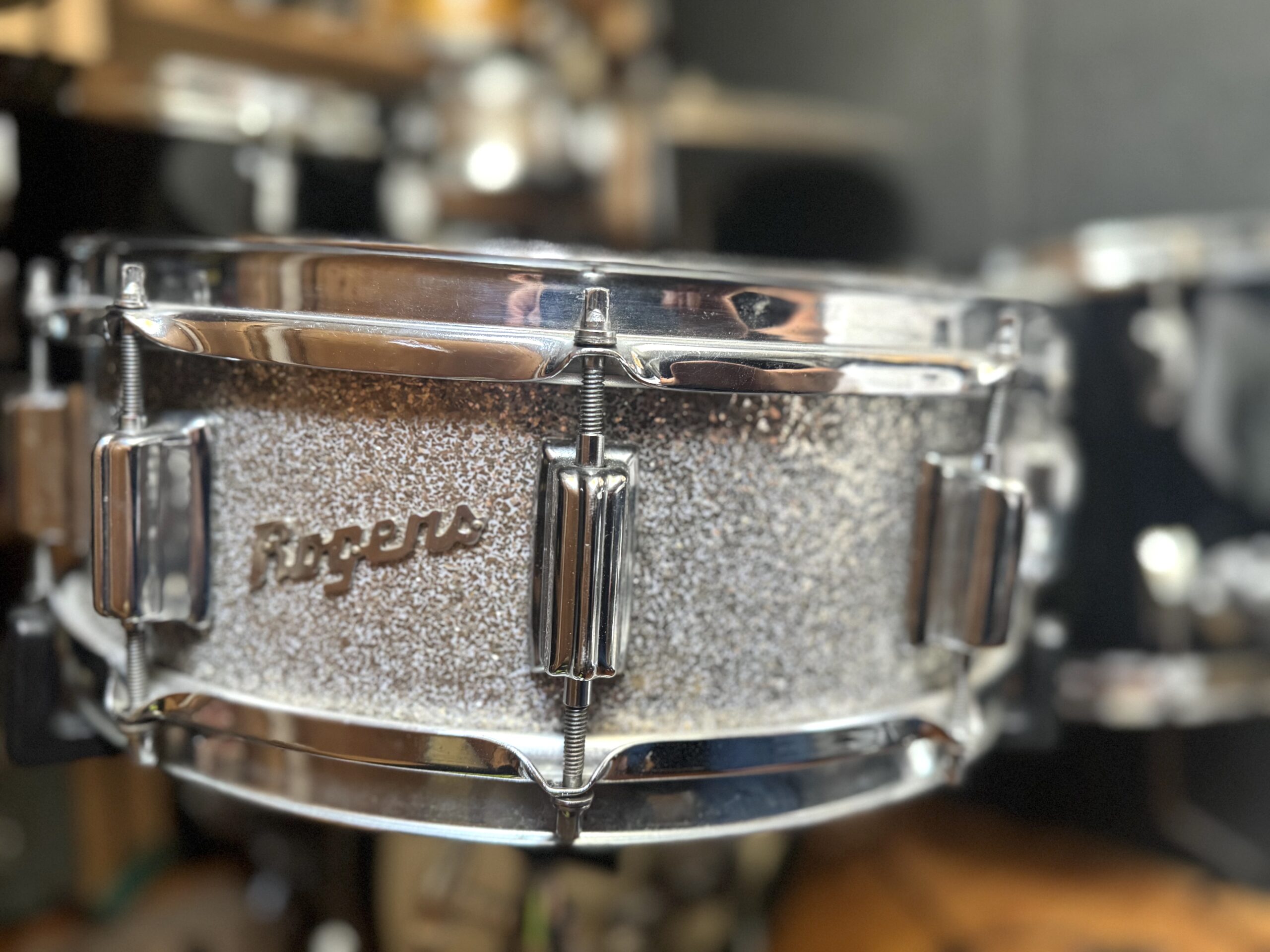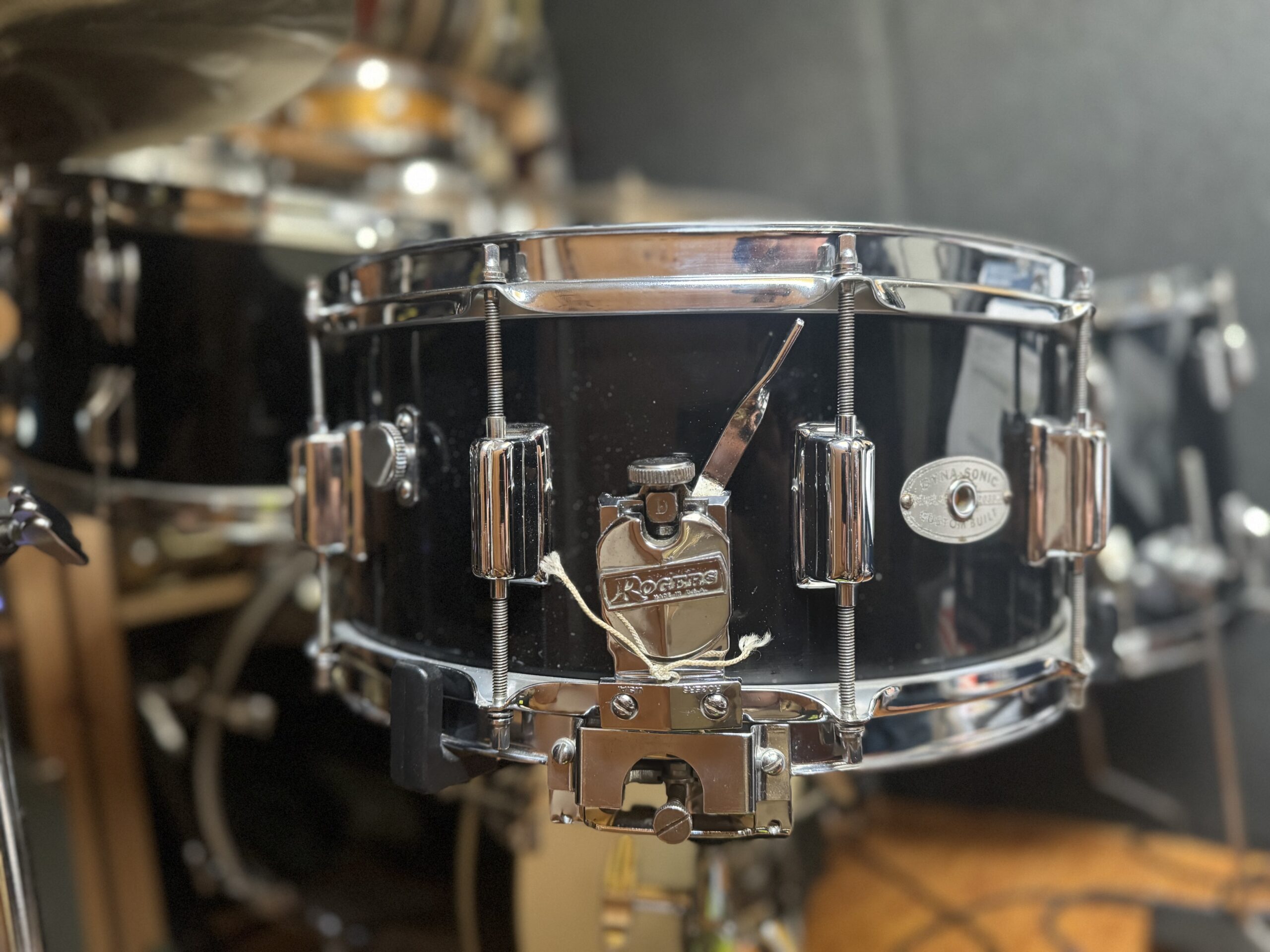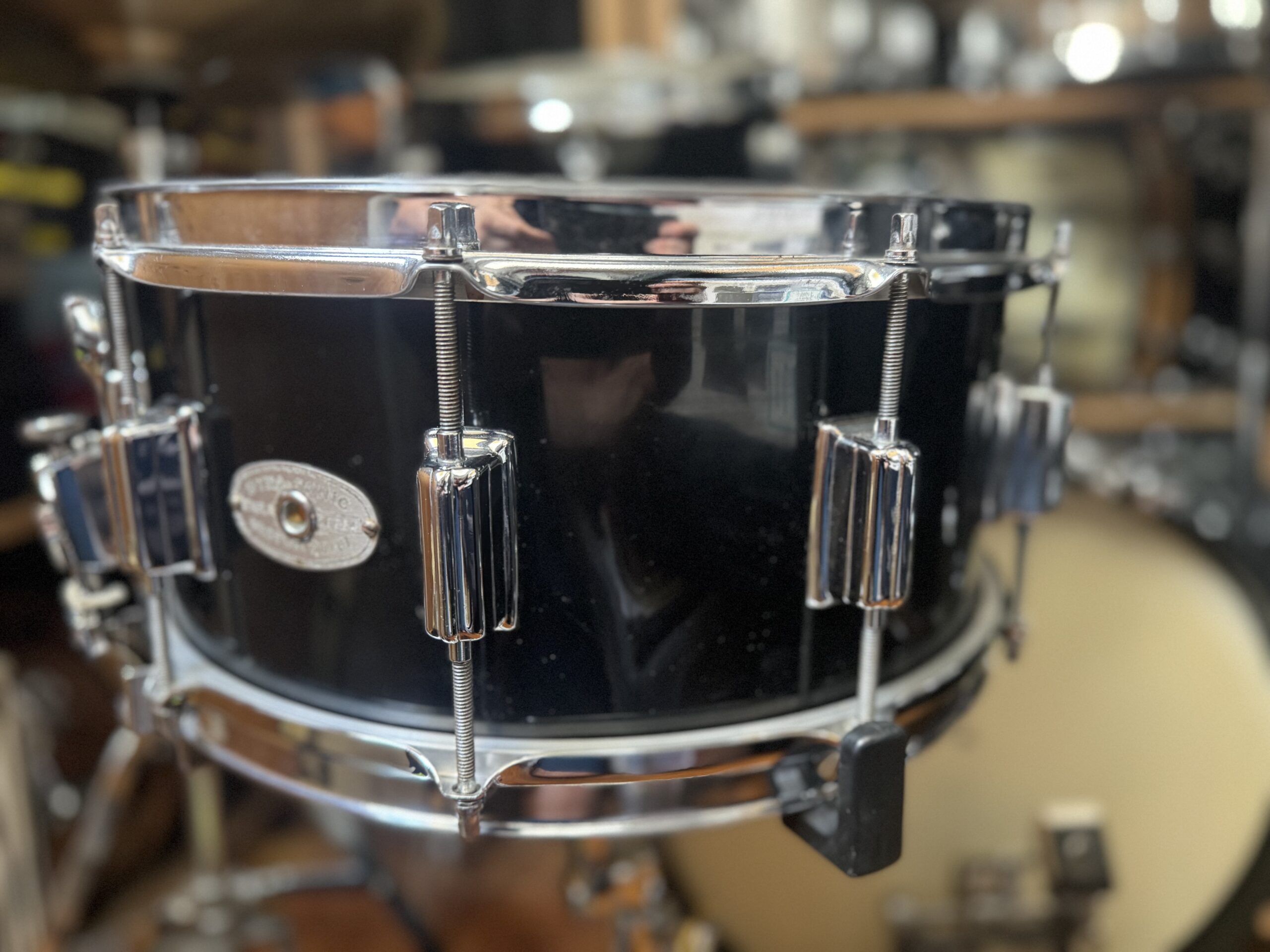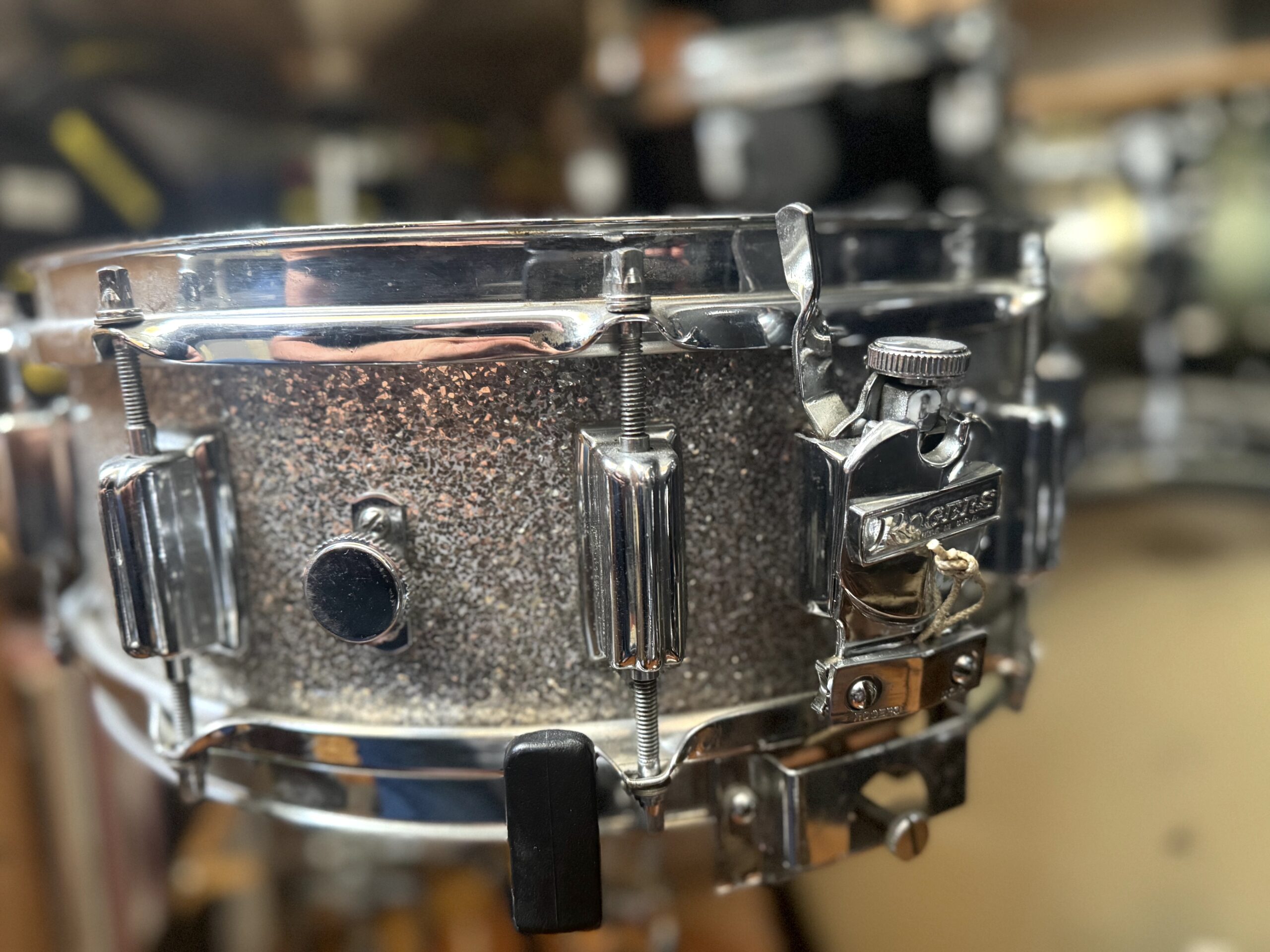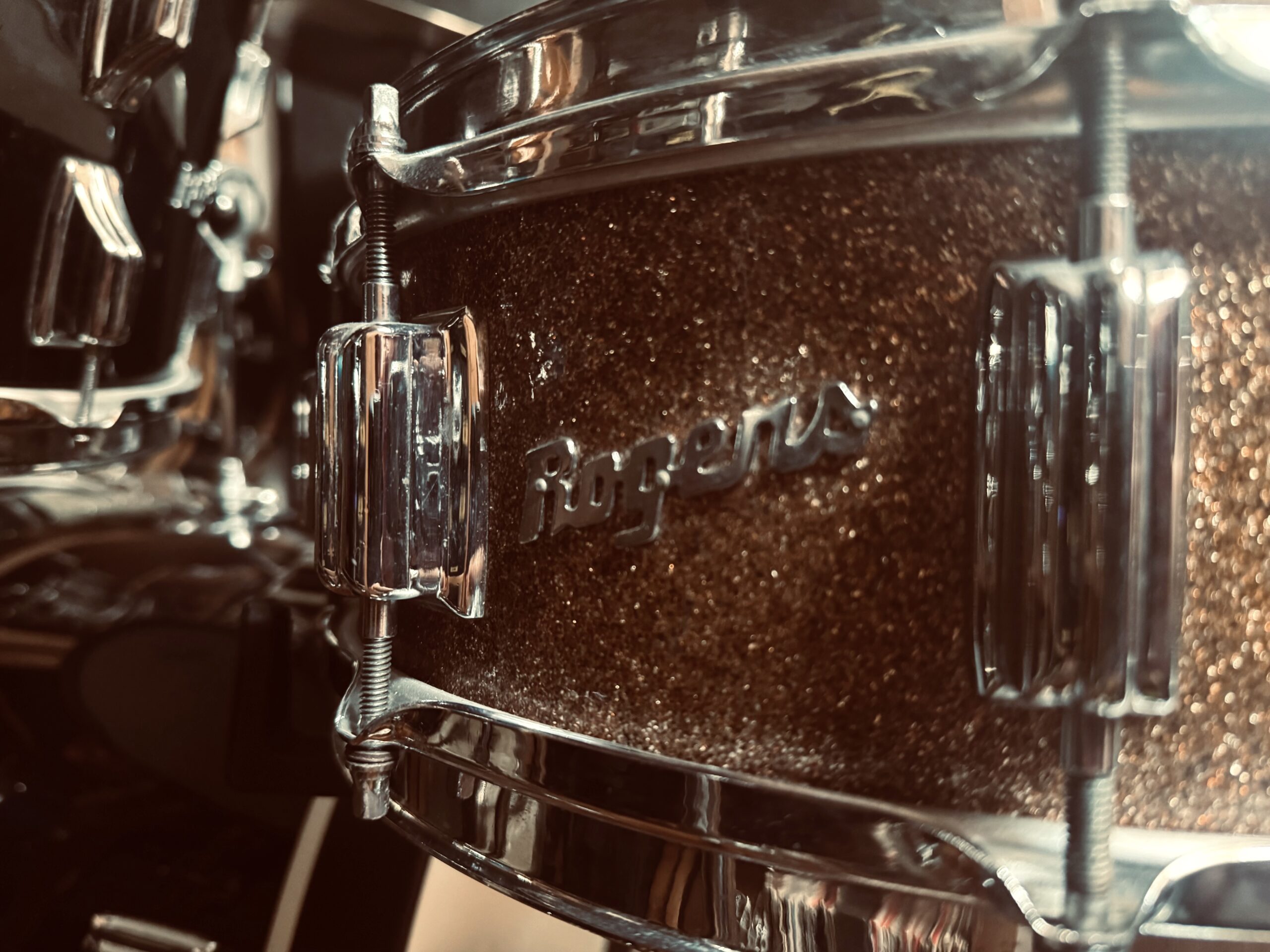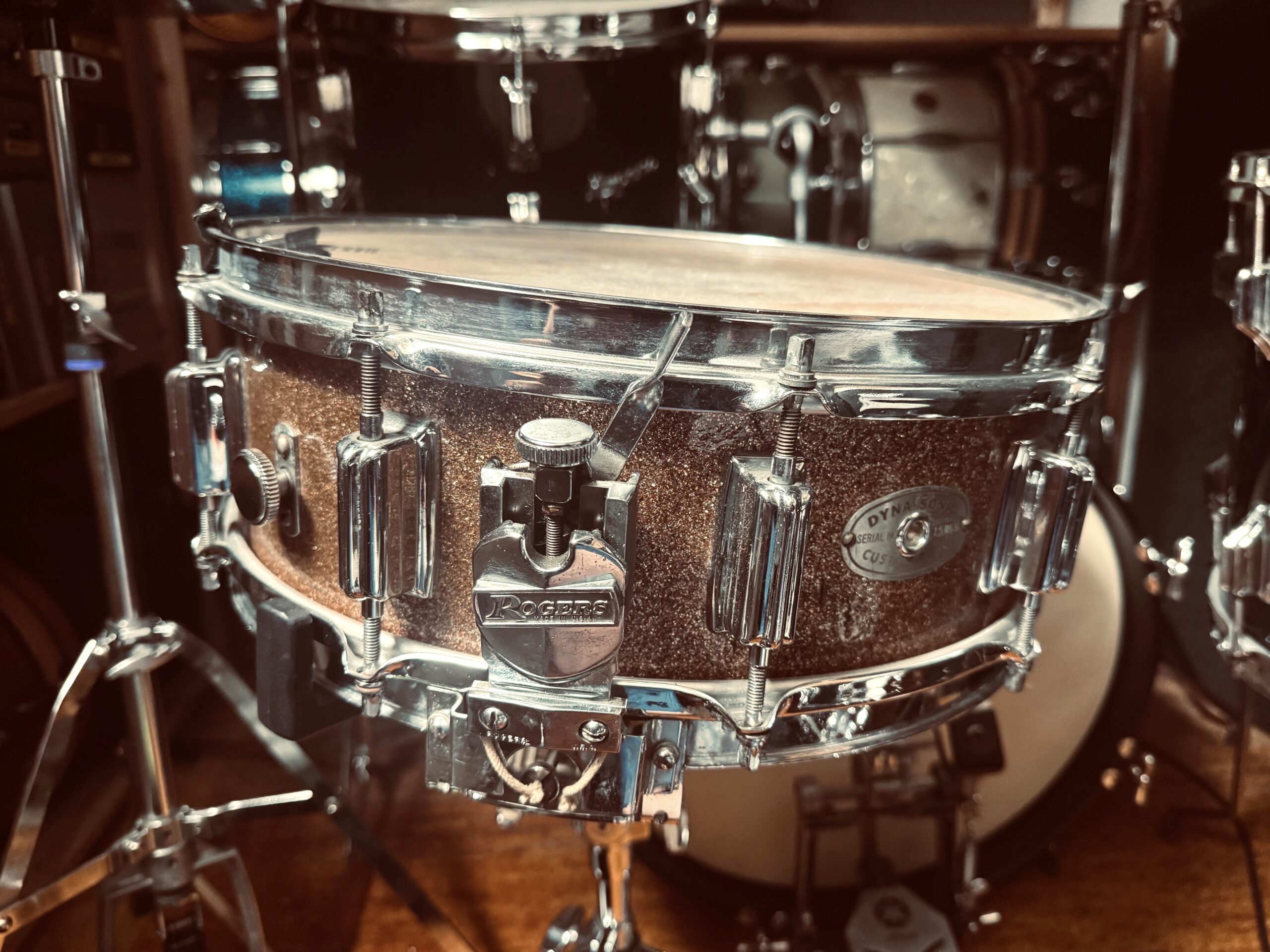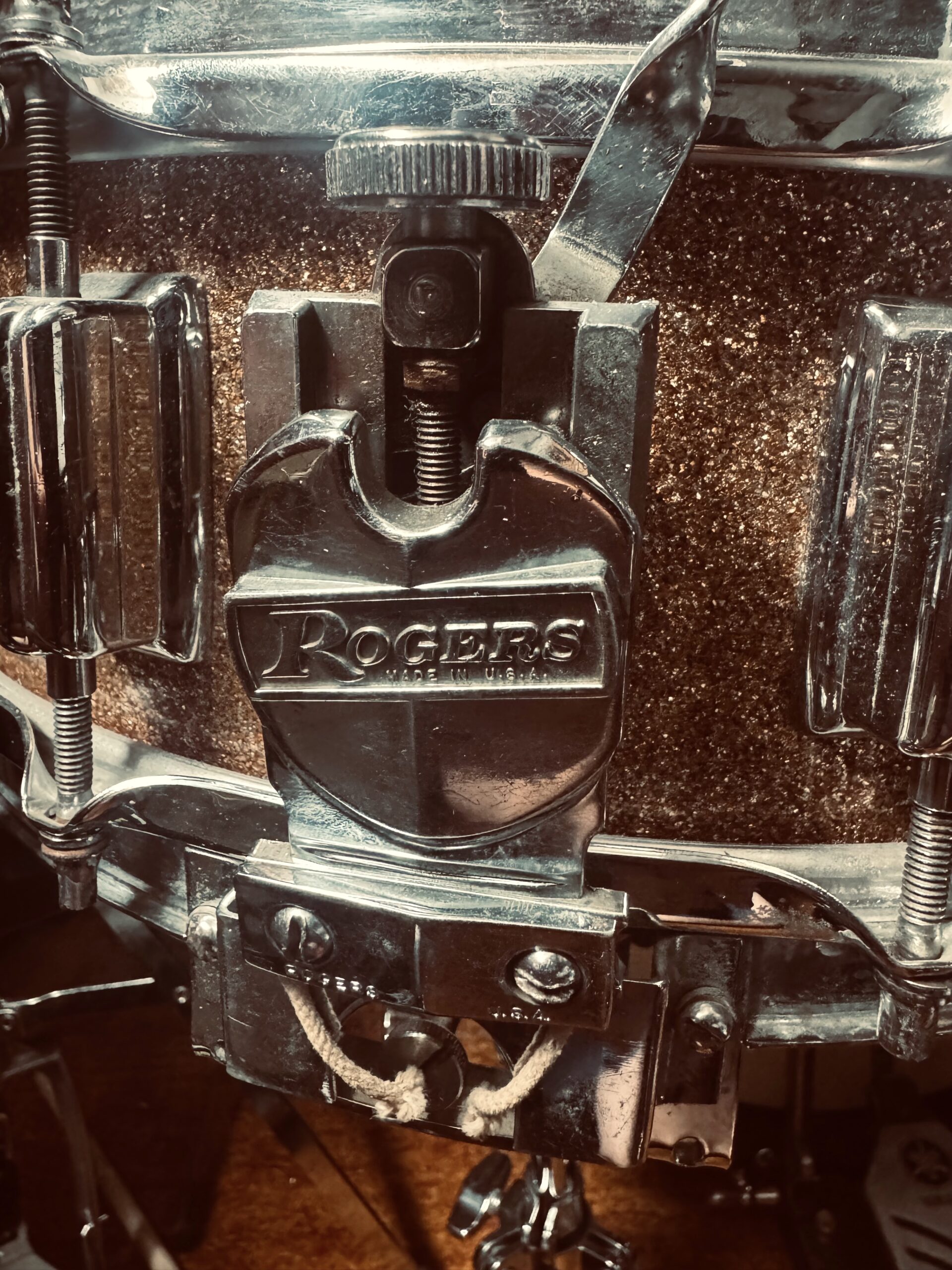Few snare drums in vintage drum history command as much respect and mystique as the Rogers Dynasonic. Introduced in the early 1960s, the Dynasonic quickly became synonymous with clarity, sensitivity, and the kind of craftsmanship that helped define Rogers as one of the „big three“ American drum companies in the 50/60`s – alongside Ludwig and Gretsch.
The Rogers Legacy – Precision in American Drum Craft
Founded in the mid-1800s but reaching its golden era in the 1950s and 60s, Rogers Drums was known for pushing technical boundaries. Their flagship lines, particularly the Holiday series and the Dynasonic snare, set new standards for shell construction and snare response.
Rogers pioneered features like the „Swiv-o-Matic“ hardware and the unique floating snare rail system on the Dynasonic—an innovation that eliminated shell dampening from the snares, delivering an unusually crisp, articulate tone.
Dynasonic: Brass and Wood Versions
The Dynasonic snare was offered in both COB (Chrome Over Brass) and wood shell versions. The brass models, especially the early “script badge” era drums, are legendary for their bright attack and projection. Production of these started around 1961 and continued well into the 1970s.
The wood shell Dynasonics—made from either 3-ply shells with 3 ply reinforcement rings, or 5-ply maple shells with 5-ply reinforcement rings and clear interior – were produced in smaller quantities, making them significantly rarer on the vintage market. Production began around 1960 and was phased out earlier than their brass counterparts. Why the rarity? Simply put: demand. At the time, brass was considered superior in projection and tone, especially in live settings, leading to fewer wooden models being ordered and sold. Wooden Dynasonic snares were discontinued in the early 70`s and reintroduced in the 80`s with a 10-ply shell.
Check out this great video about the developement of the Dynasonic snare – Thanks to Anthony:
The Artist Roster – Who Played Rogers?
Despite being less omnipresent than Ludwig, Rogers had a strong artist roster:
- Buddy Rich briefly played Rogers before returning to Slingerland.
- Louis Bellson, a dual bass pioneer, was a Rogers endorser.
- Dave Clark of the Dave Clark Five helped Rogers gain significant UK exposure.
- Jazz great Joe Morello also played Rogers during key phases of his career.
Still, Rogers never quite captured the massive mainstream drumming market like Ludwig did with Ringo Starr or Gretsch with Tony Williams. This may help explain why…
Why Are Rogers Drums Rarer in Europe?
One of the reasons Rogers drums—especially vintage Dynasonics—are harder to find in Europe is due to distribution limitations. While Ludwig and Gretsch had more aggressive export strategies and deeper dealer networks in Europe during the 1960s and 70s, Rogers focused primarily on the North American market. This made Rogers kits and snares rarer on the second-hand market overseas and contributed to their „cult“ status among European collectors today.
Collectability & Restoration
The Rogers Dynasonic remains a crown jewel for collectors. The chrome-over-brass models are often praised for their durability and sonic brilliance, while wood Dynasonics are cherished for their warm tone and historical rarity.
If you’re lucky enough to own a Rogers snare—especially a Dynasonic—proper restoration and head selection are key to unlocking its full sonic potential. At Austrian Drumhead Company, we specialize in restoring vintage snares and custom-fitting natural drumheads, including for Rogers models.
Bring out the best in your Dynasonic.
Explore our restoration services →

